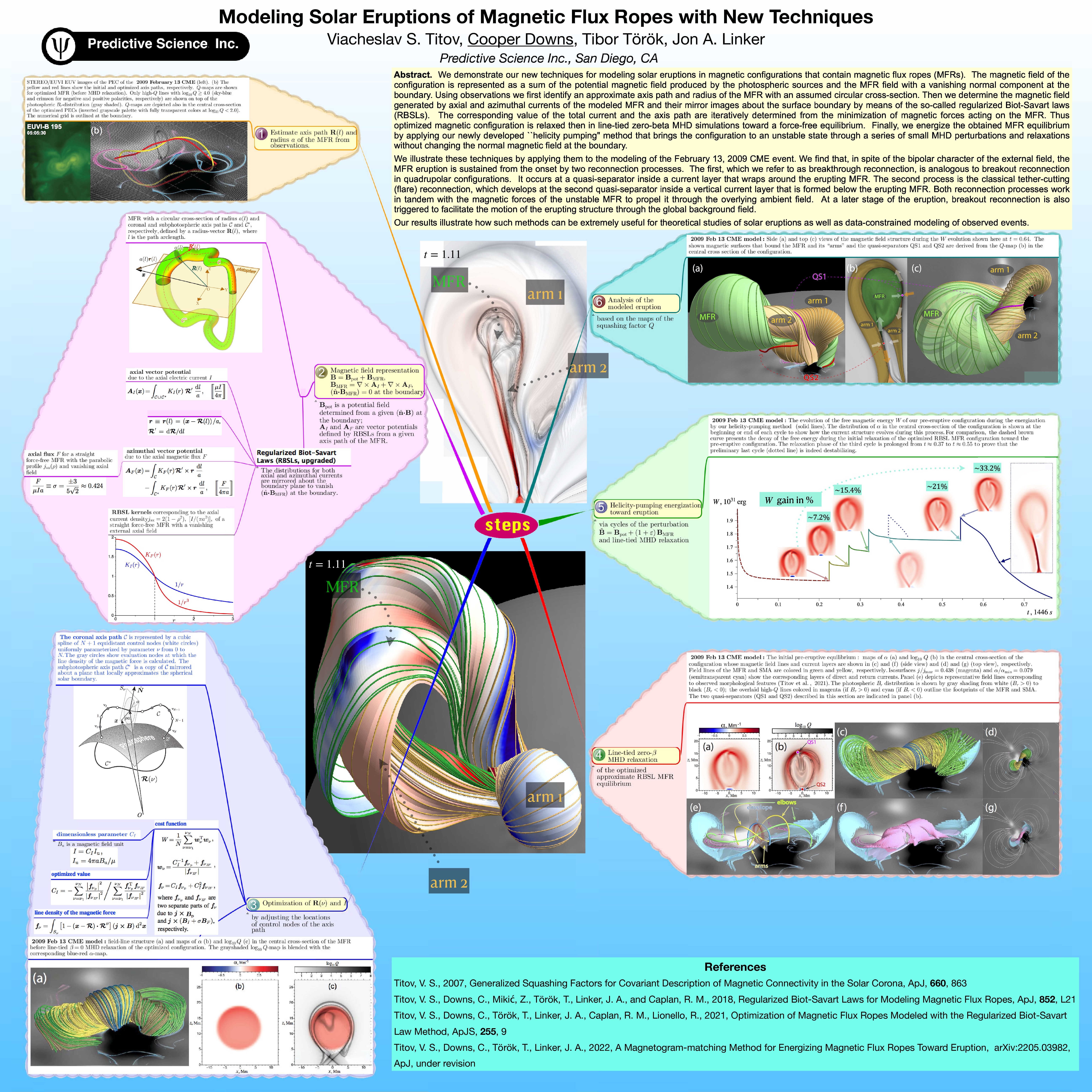Authors: Viacheslav S. Titov (PSI), Cooper Downs (PSI), Tibor Török (PSI), and Jon A. Linker (PSI)
We demonstrate our new techniques for modeling solar eruptions in magnetic configurations that contain magnetic flux ropes (MFRs). The magnetic field of the configuration is represented as a sum of the potential magnetic field produced by the photospheric sources and the MFR field with a vanishing normal component at the boundary. Using observations we first identify an approximate axis path and radius of the MFR with an assumed circular cross-section. Then we determine the magnetic field generated by axial and azimuthal currents of the modeled MFR and their mirror images about the surface boundary by means of the so-called regularized Biot-Savart laws (RBSLs). The corresponding value of the total current and the axis path are iteratively determined from the minimization of magnetic forces acting on the MFR. Thus optimized magnetic configuration is relaxed then in line-tied zero-beta MHD simulations toward a force-free equilibrium. Finally, we energize the obtained MFR equilibrium by applying our newly developed “helicity pumping” method that brings the configuration to an unstable state through a series of small MHD perturbations and relaxations without changing the normal magnetic field at the boundary.
We illustrate these techniques by applying them to the modeling of the February 13, 2009 CME event. We find that, in spite of the bipolar character of the external field, the MFR eruption is sustained from the onset by two reconnection processes. The first, which we refer to as breakthrough reconnection, is analogous to breakout reconnection in quadrupolar configurations. It occurs at a quasi-separator inside a current layer that wraps around the erupting MFR. The second process is the classical tether-cutting reconnection, which develops at the second quasi-separator inside a vertical current layer that is formed below the erupting MFR. Both reconnection processes work in tandem with the magnetic forces of the unstable MFR to propel it through the overlying ambient field. At a later stage of the eruption, breakout reconnection is also triggered to facilitate the motion of the erupting structure through the global background field. Our results illustrate how such methods can be extremely useful for theoretical studies of solar eruptions as well as data-constrained modeling of observed events.
This research was supported by NASA grants 80NSSC20K1317, 80NSSC20K1274, and 80NSSC19K0858; by NASA contract 80NSSC19C0193; by NASA/NSF grant 80NSSC20K0604; by NSF grants AGS-1923377 and ICER1854790. Computational resources were provided by NSF’s XSEDE and NASA’s NAS.


